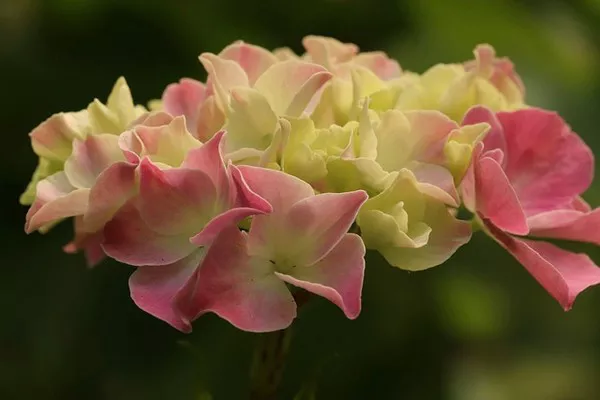Hydrangea flowers, with their voluminous clusters of delicate petals, are beloved for their enchanting beauty and versatility in floral arrangements. These blossoms, native to Asia and the Americas, come in a variety of vibrant colors, including shades of blue, pink, purple, and white, making them a popular choice for weddings, garden displays, and home decor. However, like many cut flowers, hydrangeas are prone to wilting and discoloration over time. Proper preservation techniques are essential to maintain their allure and extend their lifespan.
Factors Affecting Preservation Effect
Several factors influence the preservation effect of hydrangea flowers:
Hydration: Hydrangeas thrive in moist environments and require ample hydration to maintain their freshness. Insufficient water uptake can lead to premature wilting and browning of petals.
Temperature: Hydrangeas are sensitive to extreme temperatures. Exposure to high heat or cold can accelerate wilting and cause the petals to become brittle.
Humidity: Moderate humidity levels are crucial for preserving hydrangea flowers. Excessive dryness can cause dehydration, while excessive moisture can promote mold growth and decay.
Light: Hydrangeas should be kept away from direct sunlight, as prolonged exposure can cause the petals to fade and lose their vibrancy.
Handling: Gentle handling is essential when working with hydrangea flowers, as they are delicate and prone to bruising. Rough treatment can cause petal damage and accelerate deterioration.
Methods of Preserving Hydrangea Flowers
Several methods can be employed to preserve the beauty and freshness of hydrangea flowers:
1. Air Drying:
Air drying is a simple and effective method for preserving hydrangea blooms. To air dry hydrangeas, cut the stems at an angle and remove any excess foliage. Hang the flowers upside down in a cool, dry location away from direct sunlight. Allow the blooms to dry naturally for several weeks until they feel papery to the touch. Air-dried hydrangeas can be used in dried floral arrangements or as everlasting decor.
2. Water Drying:
Water drying, also known as glycerin preservation, involves replacing the natural sap in hydrangea stems with a solution of water and glycerin. To preserve hydrangeas using this method, mix one part glycerin with two parts lukewarm water. Trim the stems at an angle and place them in the glycerin solution, ensuring that the cut ends are submerged. Allow the flowers to absorb the solution for one to two weeks, or until the petals become soft and pliable. Remove the stems from the solution and allow them to air dry before arranging.
3. Silica Gel:
Silica gel is a desiccant material that absorbs moisture and preserves flowers by drying them from the inside out. To preserve hydrangeas with silica gel, fill a container halfway with silica gel crystals. Trim the stems and place the flowers upright in the container, ensuring that they are fully submerged in the gel. Gently sprinkle additional silica gel around the blooms until they are completely covered. Seal the container with a lid and allow the flowers to dry for several days to a week. Once dry, carefully brush away any excess silica gel from the petals.
4. Pressing:
Pressing is a traditional method of preserving flowers by flattening them between absorbent materials. To press hydrangea flowers, carefully remove the blooms from the stems and place them between two sheets of blotting paper or parchment paper. Arrange the flowers in a single layer, ensuring that they are not overlapping. Place heavy books or weights on top of the paper to press the flowers flat. Leave the flowers undisturbed for several weeks, allowing them to dry completely. Pressed hydrangeas can be used to create botanical art, greeting cards, or framed displays.
Tips for Preserving Hydrangea Flowers
To achieve optimal results when preserving hydrangea flowers, consider the following tips:
Choose Fresh Blooms: Select hydrangea blooms that are fully open and free from blemishes or damage. Fresh flowers will yield better preservation results and maintain their color and shape longer.
Harvest at the Right Time: Harvest hydrangea blooms in the morning or late afternoon when the flowers are well-hydrated and at their peak freshness. Avoid harvesting during the hottest part of the day, as this can cause the flowers to wilt more quickly.
Use Clean Tools and Containers: Use clean, sharp scissors or floral shears to cut hydrangea stems at a 45-degree angle. Ensure that vases, containers, and preservation materials are clean and free from contaminants to prevent mold and bacterial growth.
Monitor the Environment: Keep a close eye on the temperature, humidity, and light levels in the preservation area. Maintain a consistent environment conducive to flower preservation, avoiding extreme fluctuations that can compromise the quality of the blooms.
Inspect for Pests and Disease: Before preserving hydrangea flowers, inspect them for signs of pests, disease, or damage. Discard any blooms that show symptoms of infestation or infection to prevent the spread of pests and maintain the integrity of the preserved flowers.
Handle with Care: Handle hydrangea flowers gently to avoid bruising or damaging the delicate petals. Use soft, padded materials when transporting or arranging preserved blooms to prevent breakage and preserve their natural beauty.
Conclusion
In conclusion, hydrangea flowers can be effectively preserved using various methods tailored to individual preferences and desired outcomes. By understanding the factors that influence preservation, employing suitable techniques, and following best practices, enthusiasts can enjoy the enduring beauty of hydrangeas in floral arrangements, decor, and artistic creations for years to come.


